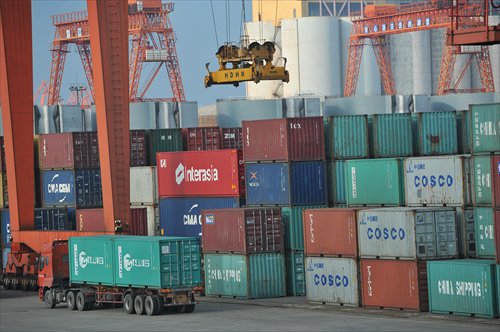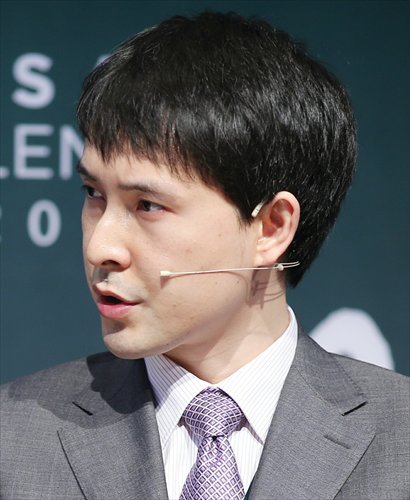Trade seen as a prescription for ‘calmer waters’
CAFTA to boost regional trade, smoothen S.China Sea disputes: expert

Containers at a port in Fangchenggang, South China's Guangxi Zhuang Autonomous Region Photo: IC

Shen Minghui Photo: Courtesy of Shen Minghui
Editor's Note:
The Permanent Court of Arbitration in The Hague on Tuesday ruled against China in the South China Sea arbitration, which China called illegal, null and void. Global Times (GT) reporter Ma Jingjing interviewed Shen Minghui (Shen), the secretary-general of the Center for APEC and East Asian Cooperation at the Chinese Academy of Social Sciences (CASS), on how the award will affect negotiations of upgrades to the China-ASEAN FTA (CAFTA), officially signed in November 2015, and negotiations of the Regional Comprehensive Economic Partnership (RCEP).
GT: Media reports say the Philippines hopes to begin direct talks with China following Tuesday's arbitration. Will the arbitration exert influence over the implementation of CAFTA as well as China-ASEAN relations?
Shen: I don't think the South China Sea arbitration will affect the CAFTA too much.
GT: In return, will CAFTA help resolve South China Sea disputes?
Shen: CAFTA indeed could enhance the economic and business relationships among these countries, which may provide opportunities for all involved to solve issues through direct negotiations. From this perspective, the CAFTA provides a strong bond for solving disputes between the Philippines and China. Relevant countries should not politicize economic issues, because doing so is not good for the smooth implementation of the upgraded protocols or resolving disputes.
GT: China and 10 ASEAN countries officially signed the upgraded protocol of CAFTA on November 22, 2015. How has it been carried out and what are the challenges ?
Shen: It's too early to say as this agreement was just implemented, and it may take three to five years to fully realize the benefits of the free trade agreement (FTA). However, there may be some operational issues. For example, the utilization rate of the original CAFTA among Chinese firms reached only 28 percent, according to a survey conducted during the 2009-10 period. That's because these firms have to apply for a certificate of origin (CO) subject to the Regional Value Content (RVC) to qualify under the original FTA, which means they may expose their costs and other business secrets. And as a result, many firms have opted not to apply for such preferences. Although the protocol was expected to tackle those problems, it is still too early to comment on future challenges.
GT: Have any upgrades been made to address these problems?
Shen: Yes. Under the upgraded CAFTA protocol, firms applying for COs are free to decide on a change in the tariff classification rule or RVC rule. Also, China has called for more customs facilitations in the FTA. Together, these two changes are expected to contribute to a higher utilization rate of the CAFTA. In addition, ASEAN and China completed a third batch of services trade concession negotiations and made more high-level and open commitments in almost 70 sectors, such as construction, tourism, finance and telecommunication.
GT: The 13th round of negotiations of the RCEP concluded in June. Has there been any progress since? What obstacles lie ahead?
Shen: Some developed economies in the RCEP, including Japan, have proposed that the countries involved further commit to trade in areas where developing countries fall short, such as services, investment and intellectual property rights. And it is said that some economies hope to adopt the rules of the Trans-Pacific Partnership into RCEP, but obviously some developing countries, including China, prefer a more gradual approach to liberalizing their economies and trade. Although China pays great attention to the RCEP, negotiations should be based on balanced interests, and the goal is to further accelerate regional economic integration in the Asia-Pacific region.
GT: Could you explain the relationship between the upgraded protocol of CAFTA and RCEP?
Shen: The RECP is expected to incorporate pre-establishment conditions and a negative-list approach, which may contribute to future CAFTA upgrading negotiations. As I mentioned, the upgrading protocol of CAFTA covers areas such as simpler rules of origin, a greater commitment to services and investment, in addition to more facilitation measures, which are expected to be incorporated into the ongoing RCEP negotiations.